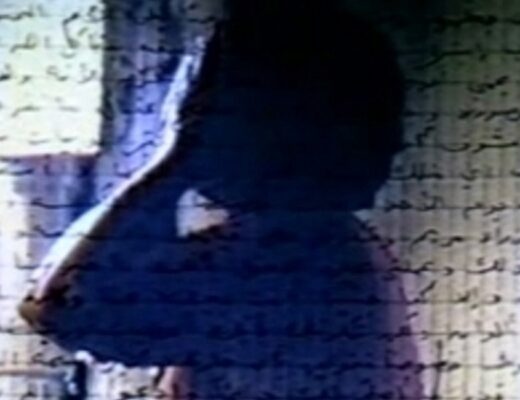Documentarian of the personal, Su Friedrich’s latest film, Today, begins with a story. A friend reads aloud a passage from The Odyssey, in which Odysseus prepares to get rid of accumulated suitors as he returns to his native shores. We hear this passage and are inclined to wonder what the allegory behind its inclusion is. Friedrich is fully aware of this, and toys with our instinct to associate images and ideas with our own experiences and knowledge. When the ponies of Chincoteague are observed riding on the beach, she superimposes the cover of Margaret Henry’s Misty of Chincoteague, recognizing the immediate childhood association before we do. White text appears on screen, voicing instinctive reactions and frustrations, and her images accompany us.
The imposition of this predictive text begins with generalized sentiments, like a flashing “oh fuck off PETA” when a protestor gets too close to the filmmaker while soliloquizing to New York. These moments soon turn toward Friedrich’s own elaboration on the background of who is on screen. She intersperses the universal with the personal, placing us and our prior stated relation to the images instead into the position of her own personal history. Her childhood anecdotes and memories are no less a part of the moment than our reaction as observers, and that moment is no less in the present than an amalgamation of pasts and hoped-for futures. These unspoken asides begin to disassemble the myth of the film’s central conceit — how can “living in the moment” truly be possible with all of the history we perpetually inhabit?
The final effect leans into a video diary spontaneity a little too much to fully establish a consistent throughline. Though it touches on pandemic isolation, and change, this day-after-day-in-a-life is a möbiusstrip that connects without incident. But when Friedrich remarks, in white typewriter text, on childhood memories of a bird like the on screen one who flew away, she hints at a clearer picture of Today’s loose concept, where every moment is punctuated by its history. What’s commendable, then, in this exchange between the internal and external, is how adept she is at following the viewers’ whims with her camera. The handheld tracking shots are attuned to what catches our eye — panning down as a child pours out her bucket of water on a hot summer day, scrolling text along a train ride, and the stretch of a baby bird reaching for its mother. Her instincts as a filmmaker are no different than ours as an observer, drawn to capturing and studying motion and change.
Today’s structure isn’t as defined as Friedrich’s magnum opus, Sink or Swim, which portioned its diary into an alphabet in reverse order. Using that structure, she toys with distance, and what’s on screen doesn’t always match the essay being read. Today builds on that approach somewhat, in that its subtitles can go on digressive tangents, offering background information and personality to the subjects that isn’t always directly depicted. A more direct corollary from Friedrich’s catalog, then, would be the loose and observational The Head of a Pin (2004). In that film, viewers can glean a rough draft for the anti-chronology diary that Today is today.
Published as part of InRO Weekly — Volume 1, Issue 12.







